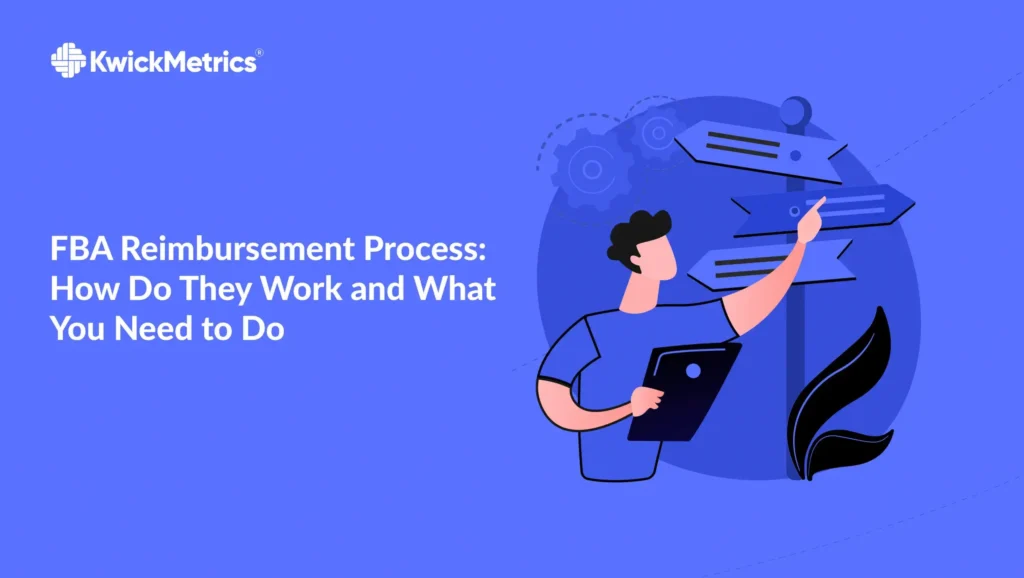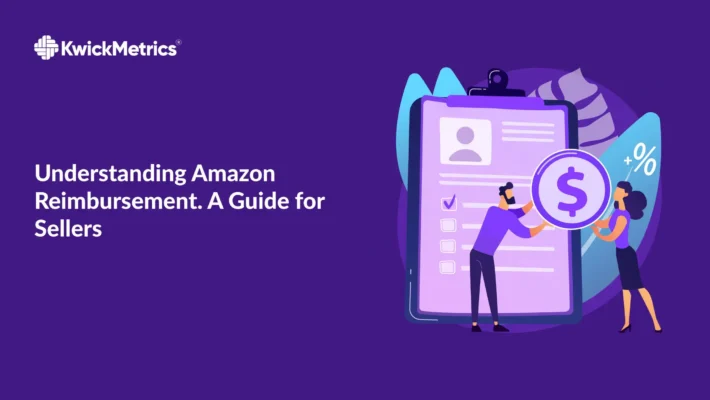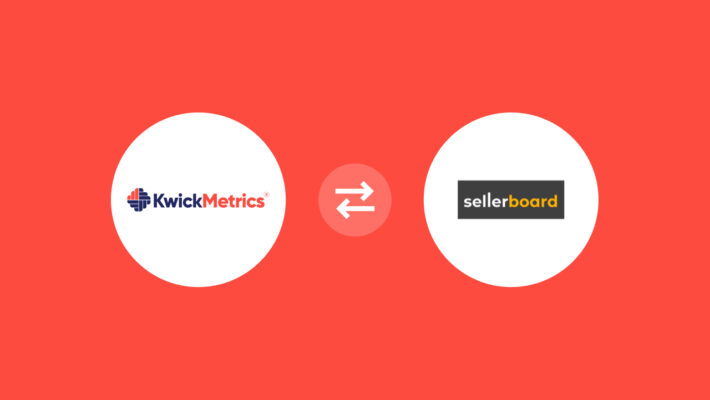FBA Reimbursement Process: How Do They Work & What You Need to Do

Table of Contents
- How Do They Work?
- What is FBA Reimbursement?
- KwickMetrics Amazon Reimbursement Service - Your Key to Maximise Profits!
- Amazon Reimbursement Types
- What You Need to Do
- Familiarize Yourself with Updated Amazon Reimbursement Policy
- Initiating the Amazon Reimbursement Process
- Check How Much Money You Deserve to Get Back!
- FAQs related to FBA Reimbursement
- Conclusion
If you are an Amazon seller who uses the Fulfillment by Amazon (FBA) service, you might have encountered some issues with your inventory or shipments that resulted in losses or damages. In such cases, you might be eligible for an FBA reimbursement which is also known as Amazon reimbursement, which can help you recover your costs and maintain your profit margin.
However, getting reimbursed by Amazon is not always straightforward. You need to understand how the FBA reimbursement process works, what types of reimbursement you can claim, and what steps you need to take to initiate and follow up on your claims.
In this blog, we will cover everything you need to know about FBA reimbursement how they work, and what you need to do.
How Do They Work?
FBA reimbursement is a process where Amazon compensates you for any losses or damages that occur to your inventory or shipments while they are under Amazon’s responsibility. This includes:
-
- Shipment to Amazon claims
-
- Fulfillment center operations claim
-
- Customer return claims
-
- Removals claims
-
- Incorrect fees
What is FBA Reimbursement?
FBA reimbursement is a monetary compensation that Amazon pays you for any eligible issues with your inventory or shipments. The amount of FBA reimbursement depends on the type and extent of the issue, as well as the value of the affected item.
The value of the item is determined by Amazon based on the following factors:
1. The median selling price of your item on Amazon throughout the last 18 months.
2. The median selling price of the same item by other sellers on Amazon within the past 18 months.
3. Your current listing price for the item on Amazon, or the average listing price if you have multiple listings for the same item.
4. The present listing price of the same item offered by other sellers on Amazon.
Note: The FBA reimbursement amount is usually equal to the value of the item minus Amazon referral fees
KwickMetrics Amazon Reimbursement Service - Your Key to Maximise Profits!
Amazon Reimbursement Types
When it comes to FBA reimbursement, there are various categories depending on the nature and cause of the issue you’ve encountered. Understanding these categories can help you navigate the FBA reimbursement process more effectively:
1. Shipment to Amazon Claims: These claims pertain to items that are lost or damaged during the shipping process to the Amazon fulfillment center. The process for filing a claim on Amazon may vary depending on when the loss or damage occurs in the fulfillment process.
2. Fulfillment Center Operations Claims: This category covers eligible items that sustain loss or damage while under the care of an Amazon fulfillment center or a facility operated on Amazon’s behalf. These incidents are typically recorded in your Inventory Ledger under the “Detailed view” with the event type listed as “Adjustments”.
3. Customer Return Claims: Customer return claims involve items lost or damaged during Amazon FBA customer orders. Amazon must have already issued refunds or replacements on behalf of your seller account for these items, in this case, you are eligible to file a claim on Amazon for a customer returns claim.
4. Removals Claims: These claims apply to items that are lost or damaged during the removal process from the Amazon fulfillment center to your designated returns shipping address. It’s important to note that the items should not have been returned to you due to a violation of program policies or terms and conditions. The damage or loss must have occurred after the item left an Amazon facility.
5. Incorrect Fees Reimbursement: Overcharged FBA Fees Reimbursement comes into play when Amazon charges you more than the agreed-upon FBA fees for services like fulfillment, storage, removals, or referral fee. This could happen due to miscalculations of size or errors in the fee calculation process.
Key Takeaway:
Understanding these categories of FBA reimbursement empowers you to address issues effectively and seek reimbursement where applicable, ensuring that your Amazon FBA experience remains smooth and profitable.
What You Need to Do
To get reimbursed by Amazon, you need to follow a series of steps that involve analyzing, documenting, filing, and tracking your claims. Here is a general overview of the FBA reimbursement process
Familiarize Yourself with Updated Amazon Reimbursement Policy
1. Shipment to Amazon Claims
Understanding Claim Window
As of new reimbursement policy, sellers can file a claim on Amazon for shipments deemed eligible for investigation within the following updated timeframes:
-
- European Marketplaces: Within 6 months after the verified delivery date to an Amazon fulfillment center or a third-party facility.
-
- India: Within 2 months after the verified delivery date .
-
- North America: The claim window remains unchanged at 9 months.
Previously, the claim window was 9 months for all marketplaces. This update aims to streamline the claim process and ensure timely resolution of issues.
Pre-Claim Checklist
Verify Shipment Contents: Ensure that the shipment’s contents and the number of units align with your initial shipping plan.
Cross-Check for Discrepancies: Utilize the Contents tab to compare your shipping plan with what the fulfillment center received.
Review Reimbursements Report: Check for any prior FBA reimbursement received for lost or damaged items.
2. Fulfillment Center Operations Claims
Understanding Claim Window
Claims must be submitted within 60 to 120 days (from 1 November 2024) after the reported loss or damage date, as documented in your Inventory Ledger report.
Pre-Claim Checklist
Confirm Loss or Damage Details: Review your Inventory Ledger > Detailed view > Event type = Adjustments to confirm the date and adjustment code.
Check Manage FBA Inventory Report: Ensure that the lost or damaged item was not found or restored to your inventory in a sellable condition.
Review Reimbursement Report: Check for previous reimbursement related to the lost or damaged item by searching by FNSKU and date.
3. Customer Return Claims
Understanding Claim Window
Sellers have a window of 60 to 120 days (from 1 November 2024) after the customer’s refund or replacement to file a claim.
Pre-Claim Checklist
Check Manage FBA Returns Report: Verify if Amazon refunded or replaced the item on your Amazon FBA order.
Review FBA Customer Returns Report: Confirm if the refunded or replaced item was returned to your inventory.
Check Reimbursement Report: Search by the Amazon Order ID to determine if you’ve already been reimbursed for the lost or damaged item.
4. Removal Claims
Understanding Claim Window
Starting November 1, 2024, the claim window for items lost in transit will be 15 to 75 days from the shipment creation. For all other removal claims, the window is 60 days from the date the shipment is delivered back.
Pre-Claim Checklist
Review Removal Order Detail Report: Confirm the date and status of your removal orders.
Check Removal Shipment Detail Report: Verify shipment status and information, including tracking IDs.
Review Reimbursement Report: Search by FNSKU to determine if you’ve already been reimbursed for the lost or damaged item.
5. Incorrect Fees
Understanding Claim Window
Claims related to Weight and Dimension Fees, Incorrect Commission Fees, and Excess Storage Fees are typically eligible within 90 days from the fee incurrence date.
Pre-Claim Checklist
Gather Documentation: Collect invoices or fee details clearly showing the discrepancy, including relevant information such as product SKU, ASIN, shipment ID, and any related transaction IDs.
Verify Fee Incurrence Date: Ensure that the claim is filed within 90 days from the date the fee was incurred.
Review Fee Reports: Utilize available reports provided by Amazon to cross-reference fee details and identify any discrepancies
Key Takeaway:
By understanding and adhering to Amazon reimbursement policy, sellers can effectively manage finances and optimize profitability within the Amazon ecosystem. Stay vigilant and proactive to ensure business thrives in the competitive marketplace.
Initiating the Amazon Reimbursement Process
| Type of Claim | Steps | Information Required |
|---|---|---|
| Shipment to Amazon |
|
|
| Fulfillment Center Operations |
|
|
| Customer Return |
|
|
| Removals |
|
|
| Incorrect fees |
|
|
Check How Much Money You Deserve to Get Back!
FAQs related to FBA Reimbursement
Q. How long does it take for Amazon to process a reimbursement claim?
A. The processing time for reimbursement claims varies depending on the complexity of the claim and Amazon’s workload. Generally, you can expect to receive a response within a few weeks to a couple of months.
Q. Can I file multiple claims for the same issue with Amazon’s FBA service?
A. No, Amazon typically allows only one claim per issue or shipment. Additional claims for the same problem or shipment are usually declined.
Q. What should I do if I disagree with Amazon’s decision on my reimbursement claim?
A. If you disagree with Amazon’s decision regarding your reimbursement claim, you can appeal the decision by providing additional evidence or clarification to support your case. You may also contact Amazon Seller Support for further assistance.
Q. Are there any fees associated with filing a reimbursement claim with Amazon?
A. Amazon does not charge any fees for filing reimbursement claims related to issues with Amazon FBA inventory or shipments. However, you may need to invest time and effort in gathering documentation and following up on your claim.
Conclusion
FBA reimbursement is a process where Amazon compensates you for any losses or damages that occur to your inventory or shipments while they are under Amazon’s responsibility. There are different types of FBA reimbursement that you can claim, such as lost or damaged inventory, customer returns, incorrect fees, or refunds. However, to get reimbursed by Amazon, you need to follow a series of steps that involve analyzing, documenting, filing, and tracking your claims. You also need to familiarize yourself with Amazon reimbursement policy and eligibility criteria.
By understating the key points we shared in this blog, you can optimize your FBA reimbursement process recover your costs and protect your profit margin. You can also avoid or prevent FBA discrepancies and improve your customer satisfaction and ratings.
If you have any questions or need any help with FBA reimbursement, feel free to contact us or leave a comment below. We are here to help you succeed as an Amazon seller. Happy selling!



